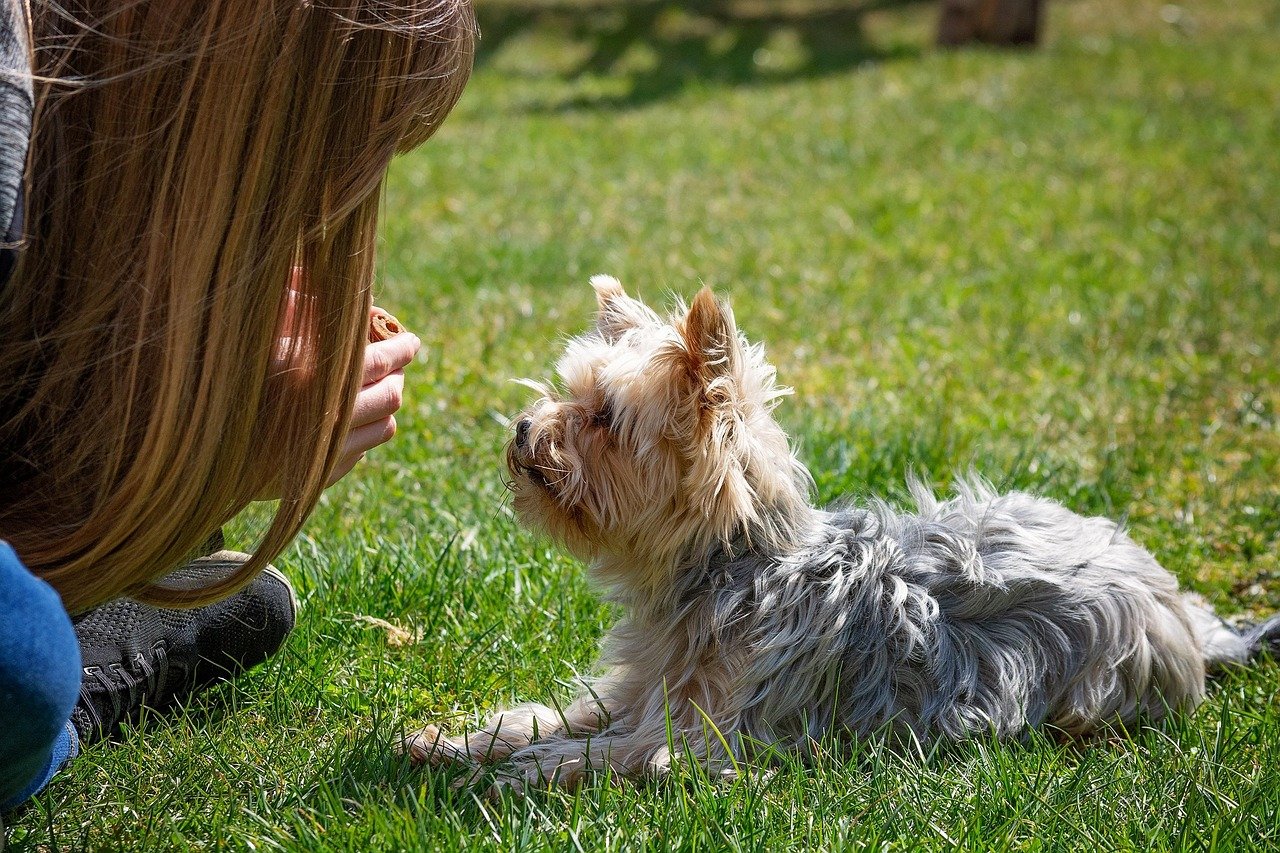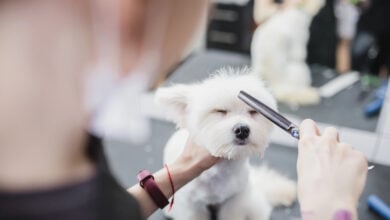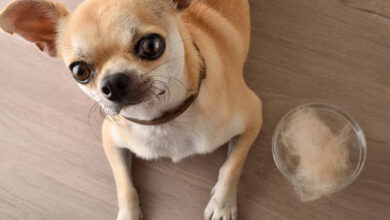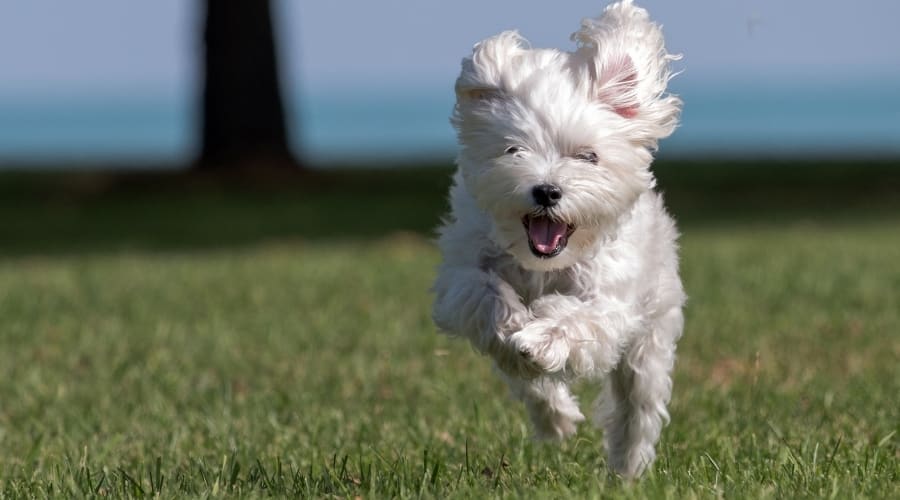Do Yorkies Shed A Lot? The Truth About Their Hair
When you purchase through links on our site, we may earn a commission. Here’s how it works.
Yorkshire Terriers are renowned for their long, silky coats, which resemble hair more than fur. That glossy look makes people wonder two things right away: how much work goes into it, and whether all that hair ends up covering your clothes and couch.
Table of Contents
Do Yorkies Shed Like Other Dogs?
If you have ever lived with a Labrador or a Husky, you know what seasonal shedding looks like. Fur gathers in the corners of your house, sticks to every fabric, and keeps lint rollers in business. Yorkies do not follow that same pattern.
Most dogs shed due to their double coat. The thick underlayer drops heavily during certain seasons to make way for a new one. That is when pet owners feel like they are drowning in fur.
Yorkies, however, have a coat that works very differently. Before we delve into the specifics of their unique hair type, it’s helpful to understand how their coat helps them avoid the typical blowout cycle that makes other breeds notorious shedders.
Why Yorkie Hair Acts More Like Human Hair
Instead of a thick undercoat that comes out in clumps, Yorkies grow a single layer of fine, silky hair. It grows slowly and steadily, more like human hair than a dog’s fur. When one strand reaches its natural limit, it falls out and is replaced by another.
This is why people often describe Yorkies as light shedders or even “non-shedding.” The hair loss is so gradual that it usually goes unnoticed until you brush or bathe them. Unlike double-coated breeds, there are no big seasonal dumps of fur, just a continuous cycle of growth and replacement.
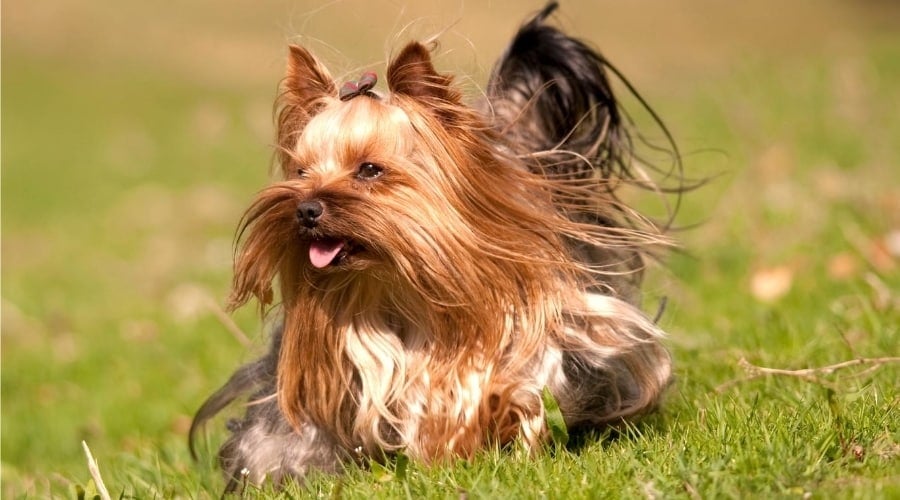
Quick takeaway: Yorkies shed differently. The hair comes out lightly over time, not in large waves like other dogs.
How Much Hair to Expect at Different Life Stages
Yorkie coats change as they grow, and the amount of hair you notice will depend on their age.
- Puppies: Yorkie puppies start with a fluffy coat that feels more like soft fuzz. As they mature, this baby coat is gradually replaced by the adult silky hair. During this transition, you may notice more hair falling out than usual, but this is a temporary phenomenon.
- Adults: Once their full adult coat grows in, the shedding process slows down. Hair falls out here and there, but usually stays caught in the coat until you brush it out.
- Seniors: Older Yorkies may experience hair loss a little more easily, just as humans do with age, resulting in thinning hair. It is usually light, but it can be more noticeable if their coat gets brittle.
Quick takeaway: Yorkies do not experience significant seasonal shedding cycles. Their hair loss is steady and mild, but you may notice more noticeable changes during puppyhood or the senior years.
When Shedding Signals A Problem
Most Yorkie hair loss is harmless, but it can sometimes indicate a more serious issue. Watch for these red flags:
- Stress: A new pet, a change in routine, or separation anxiety can cause excessive hair loss. Once the stress passes, the shedding usually slows.
- Pregnancy and hormones: Female Yorkies may experience increased shedding during pregnancy or after giving birth, but their coat should recover in time.
- Skin infections: Bald spots, redness, or sores can signal infections like ringworm, mange, or bacterial hot spots. These need vet care.
- Allergies: Environmental or food allergies can make your Yorkie itchy, which leads to scratching, skin irritation, and more hair loss.
Some conditions that cause excessive hair loss, such as skin infections in some cases or some diseases, may be covered by pet insurance. Learn more about the best pet insurance options for Yorkies and the different coverage options.
Red flag: If your Yorkie is losing hair in patches, scratching constantly, or has sore skin, it is time for a vet visit. Normal shedding is light and steady. Anything sudden or severe is not typical.
5 Grooming Habits To Keep Yorkie Hair In Check
Yorkies may not leave clumps of fur around the house, but their silky coats still demand attention. Loose strands often get caught in the hair instead of falling to the floor, which means regular upkeep is key. These five grooming habits will keep your Yorkie’s coat healthy, tangle-free, and looking its best.
1. Brush Regularly
Brushing is the single most important step in managing a Yorkie’s coat. Even though they don’t shed heavily, the hair that does fall out tends to stay trapped in their fine, silky locks. Without daily or near-daily brushing, those strands can form tangles that quickly turn into painful knots.
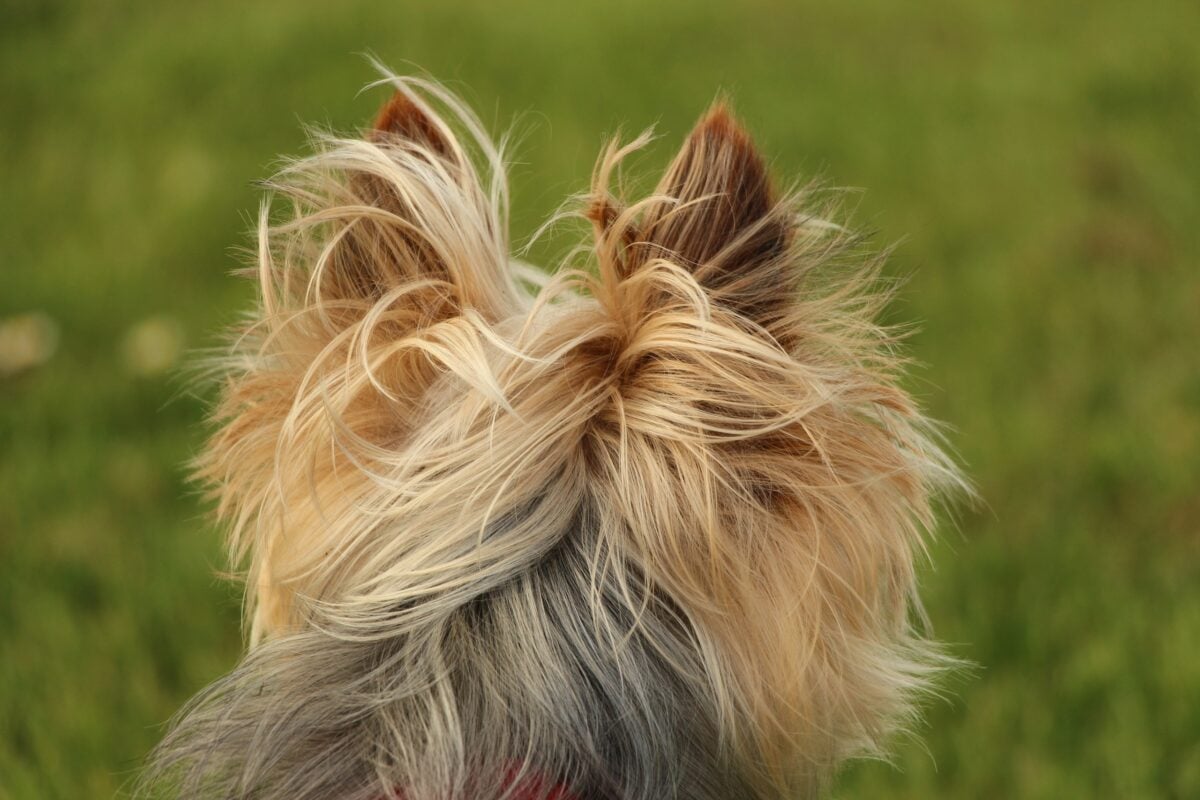
If your Yorkie wears the traditional long show coat, daily brushing is non-negotiable. It keeps the hair smooth, distributes natural oils, and removes loose strands before they clump together. For Yorkies with a shorter “puppy cut,” brushing three to four times a week is usually sufficient, as the shorter hair tangles less easily.
Regular brushing also gives you the chance to check for skin irritation, fleas, or dry spots. Think of it as a mini health checkup that keeps both your pup’s coat and skin in great shape.
2. Use The Right Tools
Not all grooming tools are suitable for Yorkies, and using the wrong ones can cause damage to their delicate coats or irritate their skin. Heavy-duty deshedding blades designed for double-coated breeds are unnecessary and far too harsh for a Yorkie’s fine, silky hair.
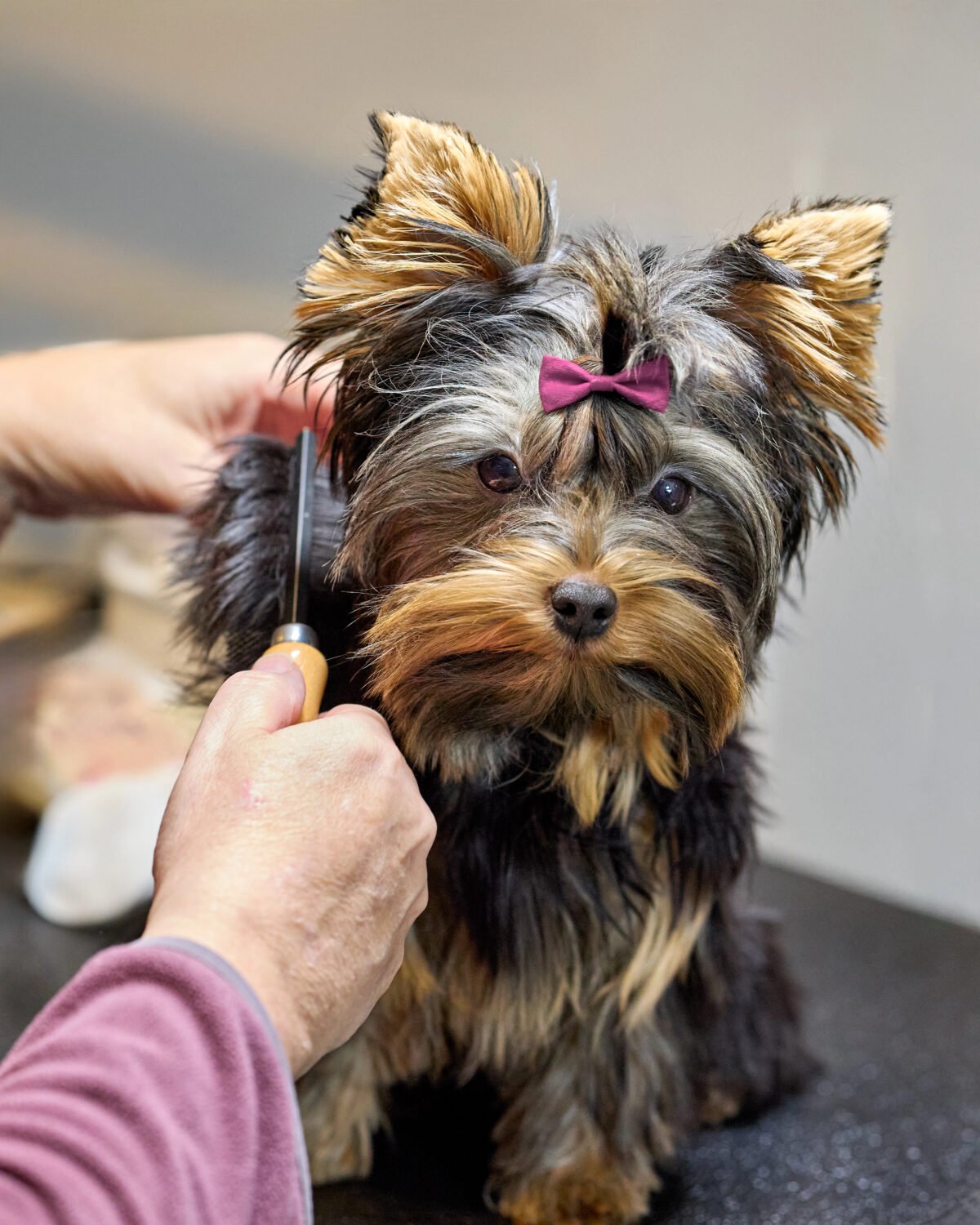
The two essentials for a Yorkie’s grooming kit are a bubble-tipped pin brush and a metal comb. The pin brush is perfect for daily use, as the rounded ends protect the skin while lifting out loose strands and distributing oils through the coat. The comb is helpful for working through tangles or mats that the brush might miss, especially around tricky areas like behind the ears, under the legs, or near the tail.
Many Yorkie owners like to use the brush for quick daily upkeep and the comb for a more detailed session a few times a week. This combination keeps the coat smooth, prevents matting, and removes hair that might otherwise get trapped and hidden.
Investing in the right tools makes grooming easier on both you and your Yorkie. A comfortable, effective routine means less resistance from your pup and fewer tangles left behind, which helps control shedding in the long run.
3. Choose A Gentle Shampoo
Bathing helps wash away loose hair and prevents it from spreading around your home. However, overbathing with harsh shampoos can dry out your Yorkie’s sensitive skin and exacerbate shedding. Choosing the right shampoo for your Yorkie is just as important as how often you use it.
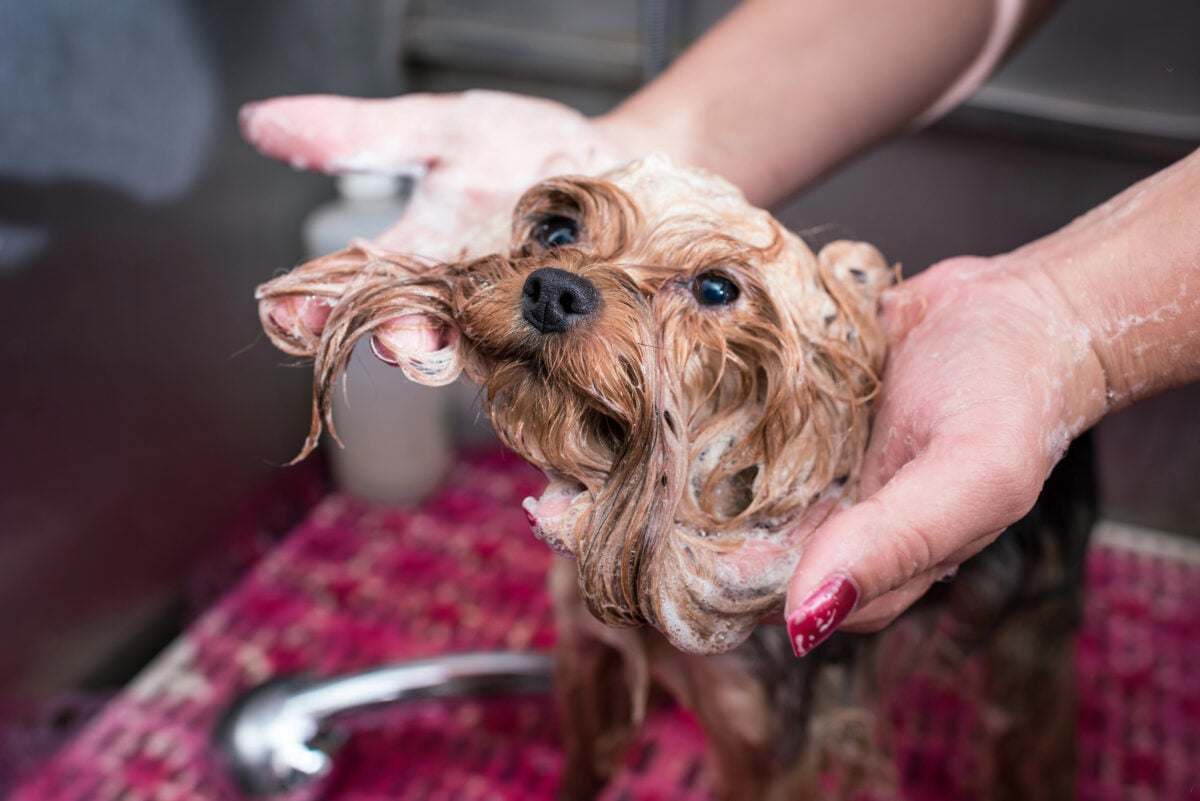
A gentle, natural shampoo, such as an oatmeal-based shampoos or aloe-infused formula, is ideal. These soothe the skin while cleansing and leave the coat soft and manageable. Some shampoos also include conditioning agents, which are especially helpful if your Yorkie has a long coat prone to tangling.
Plan to bathe your Yorkie once every two to four weeks, depending on their coat length and activity level. Too frequent baths can strip the skin of its natural oils and cause dryness, while infrequent baths can lead to buildup and mats. Always finish with a thorough rinse to prevent any residue from irritating their skin.
4. Feed A Coat-Healthy Diet
What your Yorkie eats directly affects the health of their coat. A diet rich in nutrients, especially omega fatty acids, strengthens hair follicles and keeps the skin hydrated. Healthy hair is less likely to break, thin, or fall out excessively.

Look for foods that list fish, fish oil, or flaxseed as ingredients. These are natural sources of omega-3s and omega-6s, which support coat health. Eggs can also provide beneficial proteins and fats that improve hair strength and shine.
Feeding a lower-quality diet can lead to dull, brittle hair and even increased shedding. By choosing a premium kibble or balanced homemade option, you not only improve your Yorkie’s coat but also support their overall health. View our picks for best dog food for Yorkies.
5. Consider Supplements
Even with a good diet, some Yorkies benefit from supplements that boost skin and coat health. Fish oil, flaxseed oil, or other omega-3 supplements are popular choices. These can help reduce inflammation, ease dry skin, and promote stronger, shinier hair.
Supplements also come with added bonuses. Omega-3 fatty acids support joint function, brain development, and heart health, which can be especially valuable for older Yorkies. It’s a simple way to improve both coat quality and overall wellness.
Always consult your veterinarian before adding supplements to your dog’s routine. They can recommend the right type and dosage for your Yorkie’s specific needs. With proper guidance, supplements can be a simple way to keep your pup’s coat in top condition.
Quick takeaway: Grooming isn’t optional for Yorkies. Regular brushing, the right tools, gentle bathing, a nutrient-rich diet, and smart supplements all work together to keep shedding light and manageable.
Are Yorkies Really Hypoallergenic?
Yorkies are often labeled as “hypoallergenic,” and while it’s true that they can be a better match for allergy sufferers than many other breeds, the term itself is somewhat misleading.
No dog is 100% allergy-proof. Instead, Yorkies shed less dander and hair, which means they are less likely to trigger reactions.
Let’s break down the myths and truths.
Myth 1: Yorkies Don’t Shed At All
Some breeders and websites claim Yorkies are non-shedding dogs. That sounds appealing, but it’s not entirely accurate. Every mammal with hair sheds to some degree, and Yorkies are no exception.
What makes them different is the type of shedding they exhibit. Because their hair is fine and single-layered, it grows continuously like human hair and falls out slowly.
Most loose strands stay trapped in the coat until you brush them out. This makes Yorkies feel like “non-shedders,” but technically, they still shed, just much less than most dogs.
Quick takeaway: Yorkies shed very lightly, but no dog is entirely free from shedding.
Myth 2: Yorkies Don’t Cause Allergies
Another common misconception is that Yorkies are allergy-proof. Allergies are not caused by dog hair itself but by proteins found in dander, saliva, and urine. Since dander attaches to hair, breeds that shed heavily spread allergens more widely.
Yorkies produce dander like any other dog, but the amount is smaller, and because their coat traps loose hair, less of it ends up floating around your home. This makes them easier to live with for some allergy sufferers, but not for everyone. Sensitive individuals may still react to saliva on toys, bedding, or hands after petting.
Quick takeaway: Yorkies may be easier on allergies, but they are not guaranteed to be symptom-free companions.
Myth 3: Hypoallergenic Means Low Maintenance
Some people assume that because Yorkies shed less and are considered hypoallergenic, they require less grooming. In reality, the opposite is true. Their long, silky coat demands regular brushing, bathing, and trimming to stay healthy and manageable.
Without consistent grooming, hair can tangle, mat, and trap more dander, which actually increases the chance of allergy flare-ups. A Yorkie’s reputation as a “low-shed” breed doesn’t equal less work. In fact, you may spend more time on coat care than you would with a typical shedding breed.
Quick takeaway: Hypoallergenic does not mean low effort. Grooming is essential for both coat health and allergy control.
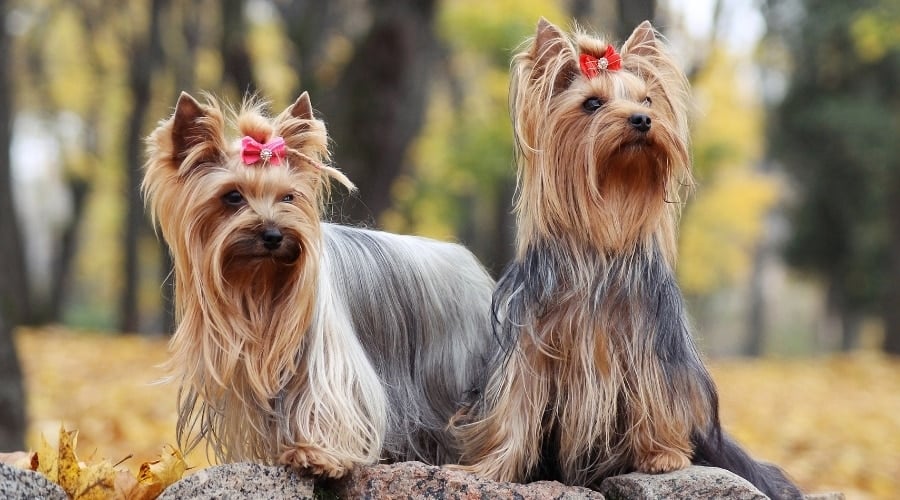
The Yorkie Shedding Cheat Sheet
Yorkies shed, but only lightly. Their hair grows and falls like human hair, so you won’t see seasonal blowouts or piles of fur on the floor.
- Shedding style: Gradual, steady, and often caught in the coat until brushed.
- Allergies: Easier on sensitive owners than heavy shedders, but not allergy-proof.
- Life stages: Puppies may shed more as they transition from one coat to another, and seniors may experience thinning with age.
- Red flags: Patchy loss, constant scratching, or sore skin = time for a vet visit.
- Control tips: Regular brushing, gentle shampooing, an omega-rich diet, and supplements help maintain a healthy coat.
Quick takeaway: A Yorkie won’t flood your home with fur, but grooming is non-negotiable to keep their silky coat in shape.
Frequently Asked Questions
Yorkies have a reputation for being light shedders, but owners still have plenty of questions about their coats. Here are answers to the most common ones, including what’s normal, what’s not, and how to keep their silky hair in top condition.
Don’t see your question? Ask us in the comments!
Why Is My Yorkie Shedding So Much?
If you see more hair than usual around your home, it’s often linked to stress, diet changes, poor nutrition, or lifestyle shifts. Adding a new pet, moving homes, or even a change in your daily schedule can throw off a Yorkie’s routine and trigger temporary hair loss.
Yorkies also tend to be anxious when left alone for long periods, which can exacerbate shedding. Once the underlying issue is resolved, the coat usually returns to normal.
When Should I Take My Yorkie To The Vet For Hair Loss?
Normal Yorkie shedding is light and steady. If you notice bald patches, red or inflamed skin, sores, or constant itching, it’s time to schedule a vet appointment. These are signs that something more serious may be going on.
Common culprits include skin infections, allergies, or parasites like mange. While most cases are treatable, early care prevents minor problems from developing into more serious ones.
Are Yorkies Good For Allergy Sufferers?
Yorkies are often recommended for people with allergies because they shed less hair and dander than most breeds. This means fewer allergens floating around your home compared to heavy shedders like Labs or Shepherds.
That said, no dog is entirely hypoallergenic. People with severe sensitivities may still react to Yorkie saliva or dander. The best way to determine if it’s the right breed for you is to spend time around it before committing to ownership.
Do Yorkies Shed More As They Get Older?
Senior Yorkies sometimes experience thinning coats or increased hair loss. This is often part of the natural aging process, much like humans may notice changes in their hair later in life.
However, age-related shedding should still be light. If you notice sudden or patchy hair loss in an older Yorkie, it may indicate underlying health issues that require veterinary care.
How Do I Stop My Yorkie’s Coat From Tangling?
Tangles are common with long Yorkie coats. The best prevention is daily brushing, which removes loose hair before it mats. If you find a tangle, work it out gently with your fingers rather than pulling with a brush.
A light spritz of leave-in conditioner or detangling spray can loosen knots. For stubborn mats, snip them out carefully; the hair will grow back, and leaving mats in place only makes them worse.
How Often Should I Groom My Yorkie?
For a long coat, daily brushing is ideal. If your Yorkie has a short “puppy cut,” brushing three to four times a week is usually enough. Regular baths, every two to four weeks, also help keep hair clean and manageable.
Professional grooming, performed every six to eight weeks, helps maintain coat health and makes brushing at home more manageable. Skipping grooming leads to tangles and mats, which trap more loose hair and dander, further exacerbating the issue.
Do Yorkies Shed More In Summer Or Winter?
Unlike double-coated breeds, Yorkies don’t shed seasonally. Their hair falls out lightly throughout the year, rather than “blowing out” during temperature changes. That’s why you won’t see extra fur piles in summer or winter.
If you notice more shedding in a specific season, it’s usually tied to allergies, diet changes, or health issues rather than the weather.
Can Diet Affect Yorkie Shedding?
Yes. Poor nutrition can lead to dry skin and brittle hair that is more prone to falling out. A high-quality diet with omega fatty acids, protein, and vitamins helps strengthen hair follicles and reduce breakage.
Adding fish oil or omega-3 supplements (with vet approval) is an easy way to improve both coat health and overall wellness. A shiny coat usually means a healthy Yorkie.
Learn More About Yorkies
If you’re considering adding a Yorkie to your family or already have one at home, there’s plenty more to know beyond shedding. A good harness can make walks safer and more comfortable for your tiny pup — see our guide to the best Yorkshire Terrier harnesses.
Curious about smaller versions of the breed? Our article on Teacup Yorkies explains what sets them apart and the special care they need.
And since every owner wants their pup to live a long, healthy life, don’t miss our breakdown of common Yorkie health issues and how to manage them.
